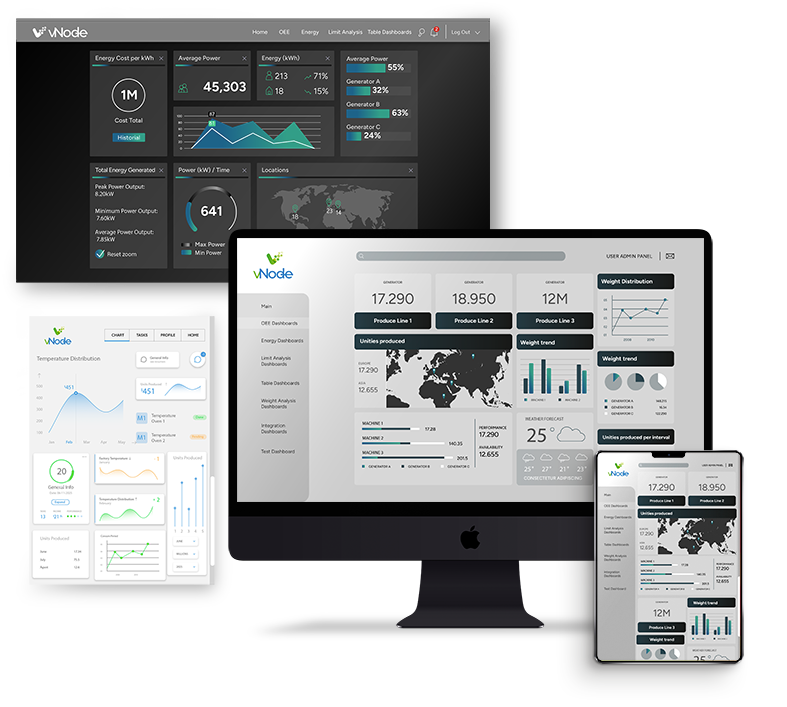Have you considered how Industrial Edge Computing could revolutionize the way you manage critical processes in your company? This emerging technology has become an essential solution to optimize performance, reduce latency and ensure operational efficiency across multiple industrial sectors. In this article we will explore the advantages of Industrial Edge Computing and we will analyze some practical cases that demonstrate its real potential.
What is industrial edge computing and why is it important?
Industrial Edge Computing refers to processing and analyzing data close to the place where it is generated, that is, directly at industrial devices or sensors. Unlike traditional cloud-based computing, this technology enables immediate response to critical events, minimizing latency and significantly enhancing operational efficiency. Specialized platforms such as vNode Automation provide specific modules designed to fully leverage the potential of Edge capabilities.
Main advantages of industrial Edge Computing
Significant latency reduction
The ability to process data close to its source is one of the key benefits of Industrial Edge Computing. This proximity considerably reduces the time needed to transmit, analyze, and act on information, which is essential in applications that require immediate response, such as industrial security systems or real-time monitoring.
Greater operational efficiency
By reducing reliance on cloud processing, Edge Computing significantly decreases data traffic and optimizes bandwidth usage. This leads to lower operational costs, improved performance of industrial systems and the possibility of reallocating technical resources to other strategic areas of the business.
Data security and privacy
Industrial Edge Computing offers much tighter control over the security of sensitive data by keeping it stored and processed locally. This feature is especially valuable in sectors such as advanced manufacturing, energy or critical infrastructure, where maintaining data privacy and security is absolutely essential.
Greater operational autonomy
Thanks to the ability to operate locally without the need for constant connection to cloud services, Edge solutions provide greater autonomy and operational robustness. This is especially critical for industries operating in remote locations or environments with limited connectivity.
Real use cases of Industrial Edge Computing
Smart manufacturing
In advanced manufacturing environments, Edge Computing enables real-time monitoring of critical machinery performance. Using specific modules such as those available in vNode, it becomes possible to detect and correct deviations in complex industrial processes before they escalate into critical failures.
Energy and utilities
In the energy sector, Edge Computing is used for real-time monitoring of smart electrical networks, allowing instant adjustments in energy distribution and optimizing the overall efficiency of the system.
Automotive industry
The automotive sector leverages Industrial Edge Computing to optimize assembly line management and predictive maintenance, ensuring final product quality and minimizing equipment downtime.
Logistics and transportation
In logistics, Edge Computing is applied to manage fleets in real-time, optimizing routes, reducing fuel consumption and providing complete visibility into the status of each transported unit.
Practical example: Bottling Plant
A practical example could be a bottling plant, where flow meters and pressure sensors generate real-time data that is sent directly to the central SCADA system. This results in a large amount of network traffic and excessive reliance on server connectivity.
With vNode deployed locally on the plant, processing logic can be applied at the edge. Through its scripting and calculation modules, vNode filters, validates and aggregates data locally, sending only relevant information or critical events to the control center. Furthermore, thanks to its Store&Forward functionality, data integrity is guaranteed even in the event of a temporary connection loss.
This edge architecture reduces bandwidth usage, improves system resilience, and enables a faster response to local anomalies.
How to successfully implement Edge Computing in your industry?
To fully leverage the benefits of Industrial Edge Computing, it is essential to select the right technology and tailor it to your specific processes. Platforms like vNode Automation provide specialized modules that simplify integration and accelerate technology adoption. You can explore more about these specific modules and learn how to implement them in your industry through the vNode Download Center.
Also, be sure to:
- Clearly identify the critical processes that would benefit most from Edge Computing.
- Evaluate the compatibility and scalability of the chosen technological solution.
- Properly train your technical team to manage and maximize the potential of this technology.
Move forward into the future with Industrial Edge Computing
Industrial Edge Computing is not just a technological innovation; it’s an essential strategy to maintain competitiveness, efficiency and security in a highly dynamic market. Its ability to reduce latencies, boost operational efficiency and ensure the security of critical data makes it an essential technological solution.
Are you ready to take the next step toward a more efficient, secure and connected industry? The future of operational performance starts today with Industrial Edge Computing.
